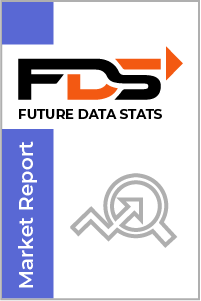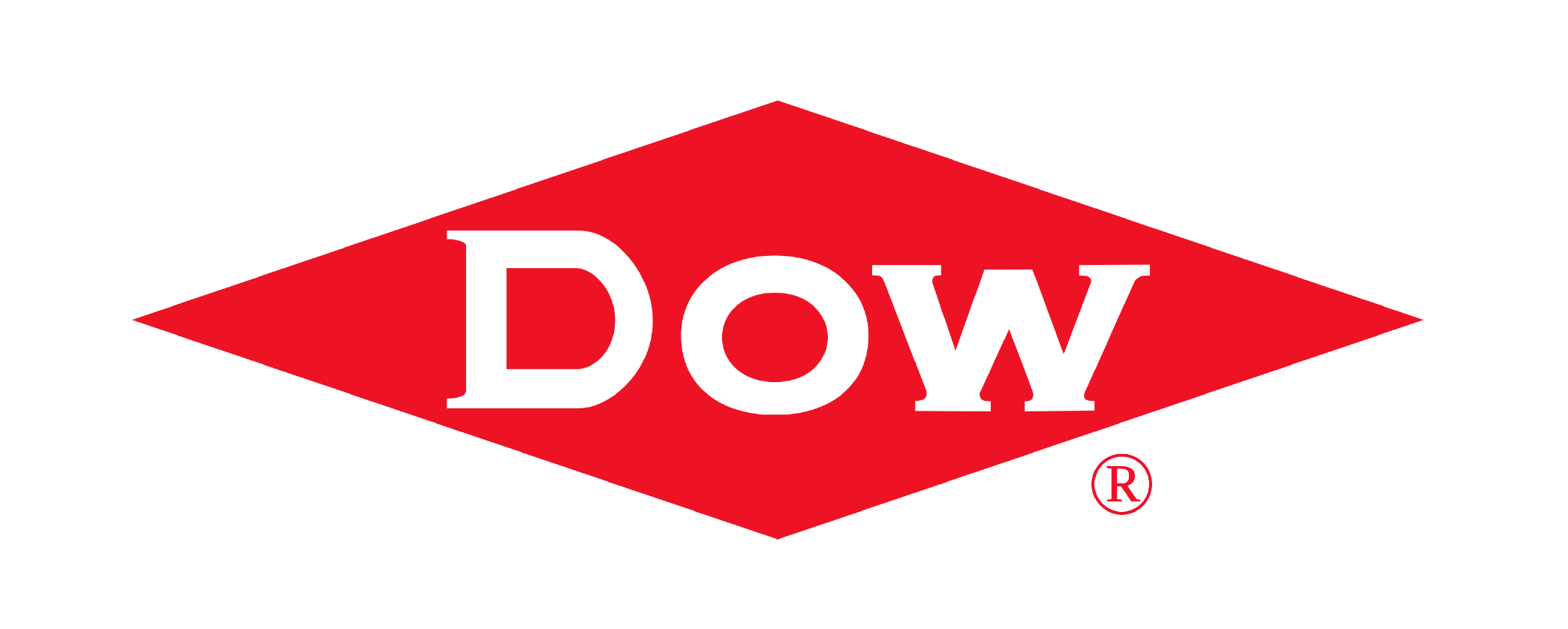The global Autonomous Mining Truck Market size was valued at USD 3.5 Billion in 2024 and is projected to expand at a compound annual growth rate (CAGR) of 15% during the forecast period, reaching a value of USD 9.5 Billion by 2032.
The "Autonomous Mining Truck Market Research Report" by Future Data Stats provides an in-depth examination of the market landscape, utilizing historical data from 2021 to 2023 to identify key trends and growth patterns. Setting 2024 as the foundational year, the report explores consumer behavior, competitive forces, and regulatory frameworks that influence the industry. It transcends basic analysis, delivering a thoroughly researched forecast extending from 2025 to 2033. By employing sophisticated data analysis methodologies, the report not only outlines the market's growth trajectory but also uncovers emerging opportunities and foresees potential obstacles, empowering stakeholders with vital insights to adeptly navigate the changing market landscape.
MARKET OVERVIEW:
The autonomous mining truck market focuses on self-operating haul trucks designed to transport materials without direct human control. These vehicles use advanced systems like GPS, sensors, AI, and onboard diagnostics to navigate mining environments efficiently and safely. Mining companies turn to autonomous trucks to reduce labor risks, lower operational costs, and boost productivity in large-scale surface and underground operations. For market purposes, this industry segment represents a growing shift toward automation in mining logistics. As global demand for minerals rises and safety regulations tighten, companies increasingly invest in autonomous truck fleets. This trend drives innovation, reshapes workforce dynamics, and creates new opportunities for technology providers in the mining automation space.
MARKET DYNAMICS:
The autonomous mining truck market is seeing a strong push toward full automation, with companies deploying AI-driven trucks that require minimal human oversight. Current trends include integration of real-time data analytics, remote monitoring systems, and cloud-based fleet management tools. These advancements help mining firms improve efficiency, reduce fuel consumption, and ensure safer operations. Additionally, key players are partnering with tech firms to develop smarter control systems and expand autonomous capabilities in challenging terrains. Looking ahead, the market is expected to grow rapidly as emerging economies invest in modernizing their mining operations. Future trends point toward the adoption of hybrid electric-autonomous trucks, greater use of machine learning for predictive maintenance, and expanded deployment in underground mining sites. The business scope is widening as mining firms seek scalable, cost-effective solutions, creating new opportunities for equipment manufacturers, software developers, and service providers in the automation ecosystem.
Companies are increasingly adopting these vehicles to enhance operational efficiency and reduce labor costs. With the ability to operate continuously without human intervention, autonomous trucks improve productivity in harsh mining environments. Additionally, safety remains a top priority, and these trucks minimize the risk of accidents by removing human operators from hazardous areas. However, the market also faces certain restraints that could hinder its expansion. High initial investment costs and the need for robust infrastructure pose challenges for many mining companies. Furthermore, regulatory compliance and the integration of autonomous systems with existing operations can complicate implementation. Despite these hurdles, numerous opportunities exist. The growing demand for minerals and the push towards sustainable mining practices create a fertile ground for innovation. As technology continues to evolve, companies that embrace these changes can gain a competitive edge in the market.
AUTONOMOUS MINING TRUCK MARKET SEGMENTATION ANALYSIS
BY TYPE:
Fully Autonomous Mining Trucks continue to lead innovation in the mining industry by offering complete independence from human intervention. These trucks follow pre-programmed routes, make real-time decisions, and adapt to environmental changes without manual input. Mining companies are increasingly investing in this type due to its potential to minimize human risk and maximize operational efficiency in large-scale sites where safety and productivity are key priorities. Semi-Autonomous Mining Trucks find strong demand where a hybrid model is preferred—allowing some human oversight alongside automation. These vehicles often operate with onboard operators who monitor systems and intervene when necessary. This approach serves as a transitional phase for mines not yet ready for full automation but still eager to benefit from reduced labor reliance and enhanced output reliability.
Remote-Controlled Mining Trucks play a crucial role in dangerous or confined mining environments. Operators control these trucks from a safe distance, ensuring human safety while still enabling efficient haulage operations. While they do not offer the full automation of other types, they remain a cost-effective and strategic solution for regions or sites with unique safety or terrain challenges.
BY APPLICATION:
Surface Mining applications dominate the market for autonomous mining trucks due to the vast and open landscapes that are ideal for automated navigation. These environments allow technologies like GPS and LiDAR to function with higher accuracy, supporting smoother transitions to full automation. As open-pit mining projects expand, especially in mineral-rich countries, the demand for surface-use autonomous trucks continues to climb.
Underground Mining presents a more complex environment, but automation is making meaningful strides here too. Trucks operating in underground mines must handle tighter spaces, lower visibility, and more unpredictable conditions. As technology advances, particularly in sensor systems and obstacle detection, autonomous trucks are becoming better suited to this demanding setting, making underground automation increasingly viable.
BY PAYLOAD CAPACITY:
Small Payload Capacity trucks are mainly deployed in sites where haul volumes are limited or the terrain restricts larger equipment. These vehicles offer flexibility and are easier to maneuver, making them suitable for niche applications or early-stage exploration projects. Companies use them to test automation technologies before committing to larger investments. Medium Payload Capacity autonomous trucks strike a balance between size and performance, making them ideal for mid-sized operations. These vehicles are widely used in both surface and underground projects and serve as a practical option for companies aiming to optimize costs while expanding capacity. Their versatility and efficiency make them a popular choice across regions.
Large Payload Capacity trucks are vital in high-volume mining operations where bulk material needs to be moved efficiently. These vehicles reduce cycle times and operational expenses when deployed effectively. Their use is expanding in countries with major mining infrastructure, where mining firms seek to automate large fleets for maximum output.
BY END-USER INDUSTRY:
Coal Mining operations frequently invest in autonomous trucks to lower production costs and increase output. Coal mines often operate over vast areas, making them well-suited for automation. The use of autonomous trucks in coal fields improves consistency in haul cycles and reduces risks to human operators exposed to dust and hazardous conditions. Metal Mining sectors rely on autonomous trucks to handle heavy loads and long hauls associated with extracting and transporting ores like copper, iron, and gold. These operations benefit from automation by achieving more precise routing, reducing equipment wear, and enhancing fuel efficiency—critical factors for maximizing profit margins in volatile metal markets.
Non-Metallic Mining industries, including the extraction of limestone, gypsum, and phosphate, are gradually adopting autonomous trucks. While traditionally slower to automate, these sectors are recognizing the value in operational efficiency and safer working environments. As automation becomes more affordable, non-metallic operations are expected to boost adoption rates.
BY TECHNOLOGY:
GPS-Based Technology remains foundational in the automation of mining trucks, guiding them through designated paths with high accuracy. This system works exceptionally well in surface mining, where satellite signals are unhindered. It allows vehicles to operate predictably and safely, helping operators plan consistent haul routes. LiDAR-Based Technology enhances the ability of autonomous trucks to sense surroundings in three dimensions. Especially useful in more challenging or cluttered environments, LiDAR helps prevent collisions and supports adaptive routing. As systems become more compact and affordable, LiDAR integration is expanding across various truck types. Radar-Based Technology complements other systems by functioning reliably in adverse weather and low-light conditions. It provides real-time feedback on nearby obstacles and moving equipment, improving operational safety. Many mining firms now pair radar with vision-based systems to ensure full situational awareness during autonomous operations.
Computer Vision-Based Technology gives mining trucks the ability to interpret visual cues such as road edges, signs, or even worker activity. This technology plays a growing role in safety-critical environments, offering fast decision-making capabilities. With the rise of AI and deep learning, computer vision systems are becoming more sophisticated and increasingly essential in next-gen autonomous fleets.
REGIONAL ANALYSIS:
In North America, mining companies lead in adopting autonomous truck technologies, driven by the need to enhance worker safety and improve operational efficiency. The region benefits from strong infrastructure, advanced R\&D facilities, and early implementation of automation in large-scale mining operations, particularly in the U.S. and Canada. Government support for digital transformation in the mining sector and a focus on reducing labor costs continue to accelerate market growth.
In Europe, strict environmental regulations and rising labor shortages are pushing mining companies toward autonomous solutions. Countries like Sweden and Germany are investing in smart mining technologies that align with sustainability goals. Meanwhile, the Asia Pacific region shows the fastest growth, fueled by high mineral demand and expanding mining activities in China, India, and Australia. Latin America, with its rich mineral reserves, is beginning to adopt autonomous trucks to modernize aging infrastructure. In the Middle East and Africa, mining-rich nations are exploring automation to increase output in remote and hazardous locations, with South Africa and Saudi Arabia emerging as key adopters.
MERGERS & ACQUISITIONS:
- In Jan 2024: Komatsu announced a partnership with Proterra to develop battery-powered autonomous mining trucks.
- In Feb 2024: Caterpillar acquired ARIN Technologies to enhance its autonomous mining truck capabilities.
- In Mar 2024: Hitachi Construction Machinery invested in AI-driven automation for its autonomous haulage systems.
- In Apr 2024: Volvo Autonomous Solutions partnered with ASI Mining to expand its autonomous mining truck offerings.
- In May 2024: Sandvik acquired a minority stake in autonomous vehicle software company Rokion.
- In Jun 2024: Liebherr launched a new generation of autonomous mining trucks with advanced AI integration.
- In Jul 2024: Scania and Rio Tinto collaborated to test autonomous haulage solutions in Australian mines.
- In Aug 2024: Epiroc acquired Meglab to strengthen its electric and autonomous mining truck infrastructure.
- In Sep 2024: BelAZ partnered with NVIDIA to integrate AI into its autonomous mining truck fleet.
- In Oct 2024: Deere & Company expanded its autonomous mining truck lineup with a new electric model.
- In Nov 2024: SANY Group merged with a robotics firm to boost autonomous mining truck R&D.
- In Dec 2024: BHP invested in autonomous truck startup SafeAI to accelerate automation in mining operations.
KEY MARKET PLAYERS:
- Caterpillar
- Komatsu
- Hitachi Construction Machinery
- Volvo Autonomous Solutions
- Liebherr
- BelAZ
- Sandvik
- Epiroc
- Scania
- Deere & Company (John Deere)
- SANY Group
- BHP (through investments)
- Rio Tinto (through collaborations)
- ASI Mining
- SafeAI
- ARIN Technologies
- Proterra (through partnerships)
- NVIDIA (through partnerships)
- Rokion
- Meglab
Autonomous Mining Truck Market: Table of Contents
Introduction
- Market Definition
- Market Scope
- Methodology
Market Dynamics
- Drivers
- Restraints
- Opportunities
- Challenges
Market Segmentation
- By Type
- By Application
- By Payload Capacity
- By End-User Industry
- By Technology
Competitive Landscape
- Market Share Analysis
- Key Players
- Strategic Developments
Regional Analysis
- North America
- Europe
- Asia Pacific
- Latin America
- Middle East & Africa
Market Trends
- Technological Advancements
- Adoption of Automation in Mining
Conclusion
- Market Forecast
- Future Outlook
Autonomous Mining Truck Market Segmentation
By Type:
- Fully Autonomous Mining Trucks
- Semi-Autonomous Mining Trucks
- Remote-Controlled Mining Trucks
By Application:
- Surface Mining
- Underground Mining
By Payload Capacity:
- Small Payload Capacity
- Medium Payload Capacity
- Large Payload Capacity
By End-User Industry:
- Coal Mining
- Metal Mining
- Non-Metallic Mining
By Technology:
- GPS-Based Technology
- LiDAR-Based Technology
- Radar-Based Technology
- Computer Vision-Based Technology
By Geography:
- North America (USA, Canada, Mexico)
- Europe (UK, Germany, France, Italy, Spain, Rest of Europe)
- Asia-Pacific (China, Japan, Australia, South Korea, India, Rest of Asia-Pacific)
- South America (Brazil, Argentina, Rest of South America)
- Middle East and Africa (GCC Countries, South Africa, Rest of MEA)
WHY SHOULD YOU INVEST IN A MARKET RESEARCH REPORT?
Smarter Business Decisions:
A high-quality market research report delivers valuable insights into industry trends, customer preferences, and competitor strategies. With solid data guiding your choices, you can minimize risks and confidently pursue new opportunities—whether launching a product or expanding into new markets.
Spot Hidden Opportunities:
Market research uncovers unmet customer needs and emerging trends before they become mainstream. By aligning your products or services with these opportunities, you can stay ahead of the competition and capture untapped demand.
Know Your Competition Inside Out:
Gain a clear picture of your competitors' strengths, weaknesses, and strategies. This knowledge helps you refine your unique selling points, craft stronger positioning, and outmaneuver rivals effectively.
Sharper, More Effective Marketing:
Understanding your audience is key to successful marketing. Market research reveals who your customers are, what drives their decisions, and how they engage with brands. With these insights, you can create tailored campaigns that deliver better results and higher ROI.
Reduce Risks Before They Arise:
Every business move carries some risk—but research helps you anticipate challenges before they become costly. By analyzing market conditions and potential obstacles, you can make proactive adjustments to protect your bottom line and reputation.
Strengthen Your Case for Funding:
Investors and lenders want proof of market potential before backing a business. A well-researched report provides the data-driven evidence they need, boosting your credibility and increasing your chances of securing capital.
Stay Ahead of Industry Shifts:
Markets evolve fast, with new technologies, regulations, and consumer behaviors constantly reshaping the landscape. Regular market research ensures you stay informed, adapt quickly, and maintain a competitive edge in your industry.
RESEARCH METHODOLOGY AT FUTURE DATA STATS
At Future Data Stats, we combine decades of industry expertise with cutting-edge research techniques to deliver unparalleled market intelligence. Our team of seasoned analysts employs a dynamic, data-driven approach to uncover actionable insights, helping businesses navigate complex market landscapes with confidence.
Comprehensive & Cutting-Edge Market Analysis
We go beyond surface-level trends to provide a 360-degree view of market dynamics. Our research methodology is designed to:
✔ Accurately assess market size, growth patterns, and competitive landscapes.
✔ Identify emerging opportunities through real-time trend analysis and predictive modeling.
✔ Validate findings with high-quality data, expert consultations, and independent verification.
Our insights empower decision-makers with strategic clarity, ensuring they stay ahead in rapidly evolving industries.
Multi-Source Data Collection & Validation
We leverage a diverse mix of primary and secondary research sources, including:
- In-depth stakeholder interviews (industry leaders, suppliers, distributors, and end-users)
- Statistical databases & market reports from authoritative global sources
- Regional market intelligence to capture localized trends and demand shifts
- Proprietary analytical models tailored to specific industry needs
- By cross-verifying data from multiple streams, we ensure maximum accuracy and reliability.
Key Advantages of Our Research Approach
- Actionable Intelligence – Clear, data-backed recommendations for strategic planning.
- Technology-Enhanced Accuracy – Advanced tools for data validation and trend forecasting.
- Unbiased Insights – Independent analysis free from external influence.
Our Two-Tier Research Framework
- Primary Research – Direct Industry Engagement
- Expert Interviews: Over 25+ hours of discussions with key stakeholders across the value chain.
- Targeted Surveys: Structured questionnaires for KOLs (Key Opinion Leaders) to gauge market sentiment.
- Competitive Benchmarking: Assessing leading players to determine market positioning.
- Secondary Research – Extensive Data Synthesis
- Analysis of 3,000+ documents, including industry reports, whitepapers, and regulatory publications.
- Global & regional data mining from government databases, trade journals, and financial reports.
- Macroeconomic & sector-specific trend mapping for long-term forecasting.
Dual Analytical Approach
We employ both top-down and bottom-up methodologies to ensure precision:
- Bottom-Up Analysis: Calculating market size from granular data, ensuring detailed accuracy.
- Top-Down Assessment: Validating findings through macroeconomic indicators and industry benchmarks.
Why Choose Future Data Stats?
✔ 70+ years of collective expertise in market intelligence.
✔ Customized research models for sector-specific accuracy.
✔ Transparent, reliable, and forward-thinking insights.
With Future Data Stats, you don’t just get data—you get a strategic advantage. Partner with us to unlock the full potential of your market decisions.
Autonomous Mining Truck Market Dynamic Factors
Drivers:
- Increased demand for mining efficiency and productivity.
- Rising labor safety concerns in hazardous mining environments.
- Cost reduction through automation and fewer operational delays.
- Technological advancements in autonomous vehicle systems.
- Strong government support for automation in the mining sector.
Restraints:
- High initial investment and infrastructure costs.
- Limited adoption in small and medium-sized mining operations.
- Regulatory and safety compliance challenges.
- Lack of skilled workforce to manage advanced automation.
- Resistance to change from traditional mining practices.
Opportunities:
- Expansion into emerging markets with growing mining industries.
- Integration with AI and IoT for smarter operations.
- Growth in demand for sustainable mining practices.
- Potential for remote and autonomous mining operations in hazardous areas.
- Increasing investments in autonomous technology by mining giants.
Challenges:
- Technical hurdles in developing fully autonomous systems.
- Difficulty in adapting to diverse and complex mining environments.
- Need for continuous data monitoring and system updates.
- Public perception and regulatory concerns over safety and job displacement.
- Integration of autonomous trucks with existing mining infrastructure.
Autonomous Mining Truck Market Regional Key Trends Analysis
North America:
- Rising investments in autonomous technologies by mining companies.
- Strong regulatory support and government initiatives for automation.
- Increased focus on sustainability and reducing environmental impact.
Europe:
- Growing adoption of autonomous trucks due to labor shortages.
- Implementation of advanced safety regulations for autonomous vehicles.
- High focus on integrating AI and machine learning in mining operations.
Asia Pacific:
- Significant demand for autonomous mining trucks in emerging economies.
- Rapid industrialization and infrastructure growth in the mining sector.
- Strong government support for technological advancements in mining.
Latin America:
- Increased focus on cost-effective and efficient mining solutions.
- Adoption of autonomous trucks driven by labor challenges.
- Expansion of mining operations in remote areas requiring automation.
Middle East & Africa:
- Growing interest in autonomous technology to enhance mining operations.
- Expanding mining activities in harsh and remote environments.
- Government initiatives to promote automation and technological innovation in the mining sector.
Frequently Asked Questions

















